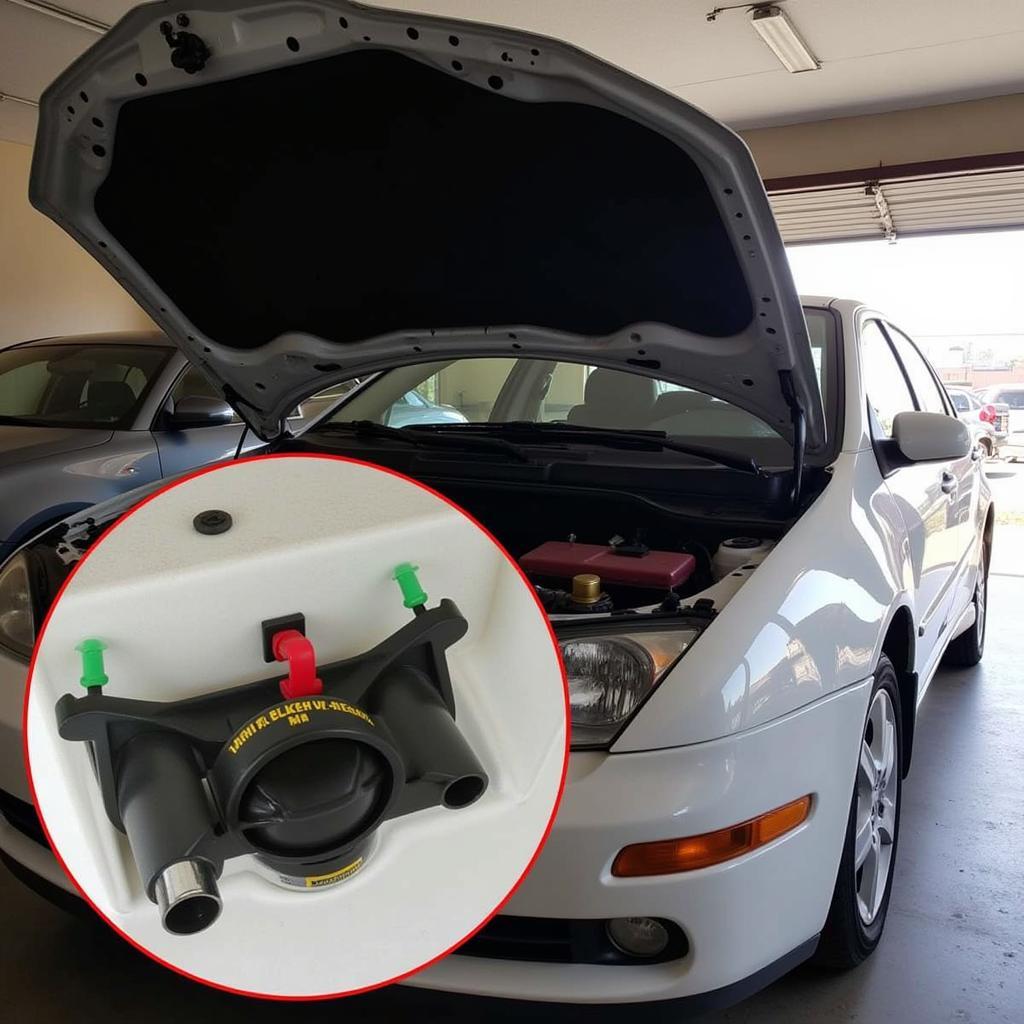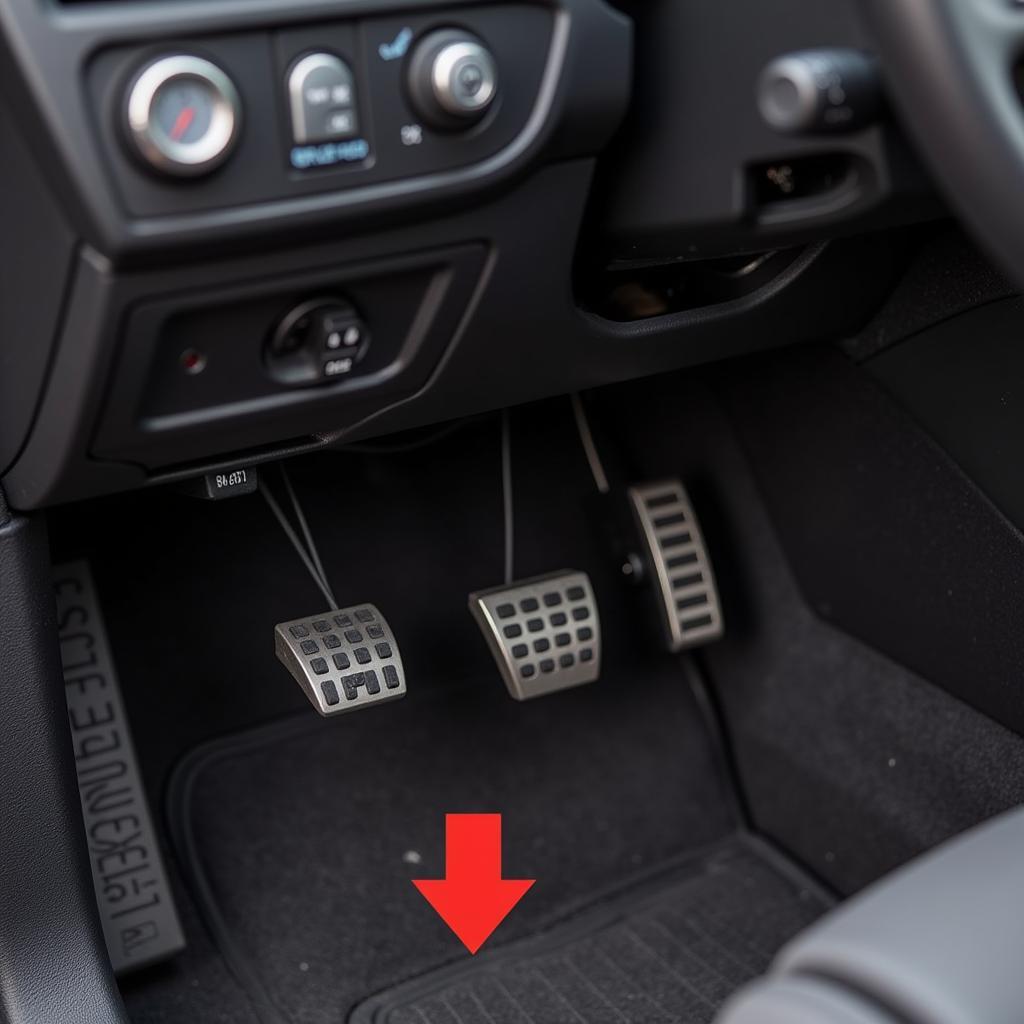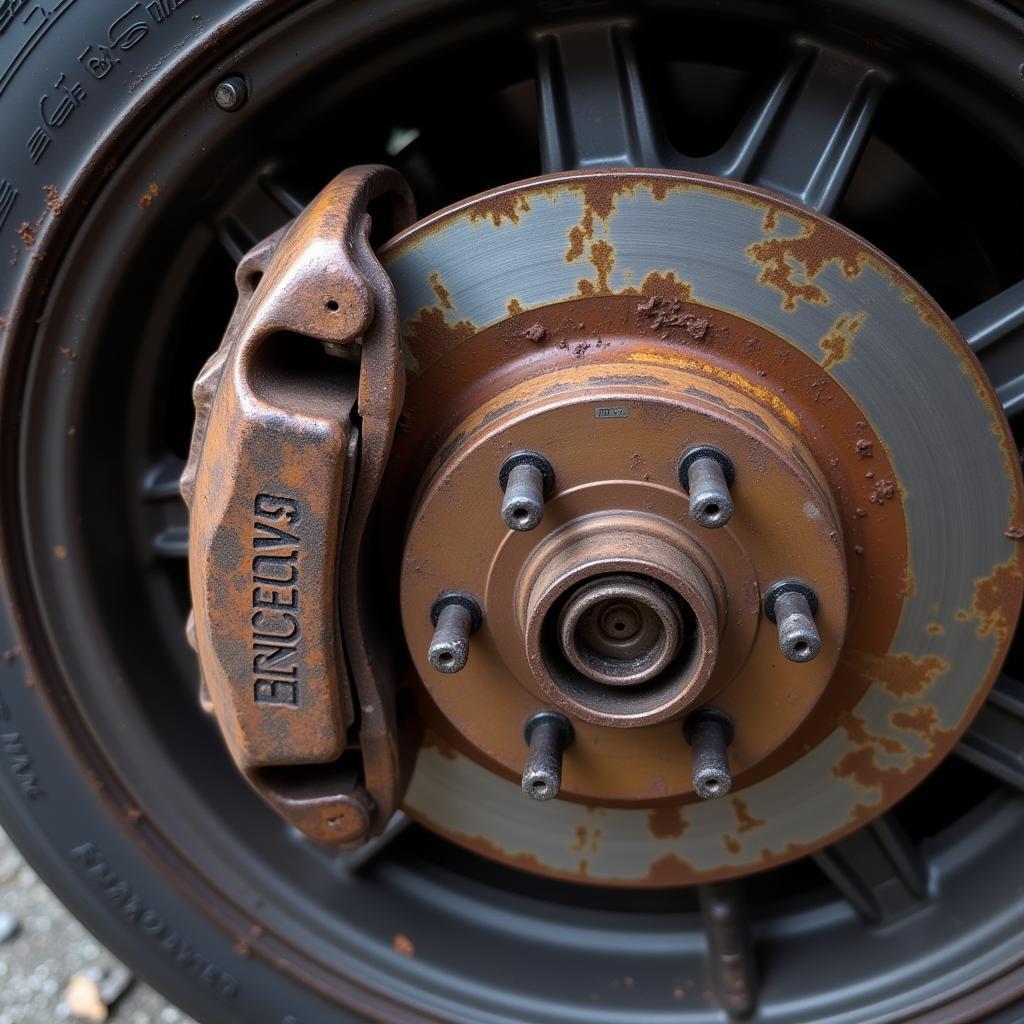A glowing brake warning light on your dashboard is a nerve-wracking experience, especially when it refuses to switch off. While it might be tempting to dismiss it as a minor glitch, ignoring it can lead to dangerous situations on the road. As an expert in automotive electrical engineering specializing in remote diagnostics, programming, and software installation, I’m here to guide you through the possible reasons behind a persistent brake warning light and how to address them.
Common Causes of a Brake Warning Light That Won’t Turn Off
There are several reasons why your brake warning light might be illuminating, ranging from simple fixes to more complex issues requiring professional attention:
1. Low Brake Fluid Level
This is the most common culprit behind a persistent brake warning light. Brake fluid is crucial for transmitting the force you apply to the brake pedal to the wheels, enabling your vehicle to stop.
How to Check:
- Locate the brake fluid reservoir under the hood. It’s usually a translucent container with a “Brake Fluid” label.
- Check the fluid level against the “Min” and “Max” markings on the reservoir.
Solution:
If the fluid level is low, carefully top it off with the recommended brake fluid type for your car (refer to your owner’s manual). However, if you notice a significant drop in brake fluid level, it could indicate a leak, requiring immediate professional inspection.
 Car with low brake fluid level
Car with low brake fluid level
2. Worn-Out Brake Pads
Brake pads are designed to wear down over time with regular use. When they become too thin, a sensor embedded within the pad triggers the brake warning light.
Solution:
Worn-out brake pads need to be replaced promptly to ensure optimal braking performance and safety. Consult a qualified mechanic or visit a trusted service center for a brake pad inspection and replacement.
3. Faulty Brake Light Switch
The brake light switch, located beneath the brake pedal, activates your brake lights when you apply the brakes. A malfunctioning switch can cause issues with both your brake lights and the warning light.
Solution:
A faulty brake light switch needs to be replaced. While this is a relatively straightforward repair, it’s recommended to seek professional assistance to ensure it’s done correctly.
 Location of the brake light switch under the dashboard
Location of the brake light switch under the dashboard
4. ABS Problem
Modern vehicles are equipped with an Anti-lock Braking System (ABS), which prevents wheels from locking up during hard braking. If the ABS system encounters a malfunction, it can trigger the brake warning light.
Solution:
Diagnosing an ABS problem requires specialized diagnostic tools. It’s crucial to take your vehicle to a qualified mechanic or dealership for proper inspection and repair.
5. Issue with the Brake Caliper
The brake caliper houses the brake pads and pistons, applying pressure to the brake rotor to slow down or stop the wheel. A stuck or seized caliper can cause uneven braking and trigger the warning light.
Solution:
A sticking caliper needs immediate attention as it can lead to reduced braking performance and increased wear on other brake components. Have your brake system inspected by a professional mechanic to identify and address the issue.
 A stuck brake caliper on a car wheel
A stuck brake caliper on a car wheel
Don’t Ignore the Warning
A persistent brake warning light is a clear indication that something is amiss with your vehicle’s braking system. While some causes may seem minor, it’s crucial not to ignore this warning sign. Neglecting brake problems can lead to more severe issues, compromising your safety and potentially leading to costly repairs down the line.
If you’re experiencing a persistent brake warning light, it’s always best to err on the side of caution and seek professional diagnostics and repair. Your safety and the well-being of your vehicle are paramount.
Frequently Asked Questions:
1. Can I still drive my car if the brake warning light is on?
While you might be able to drive a short distance, it’s highly discouraged. Driving with a potential brake issue significantly increases the risk of accidents.
2. How much does it cost to fix a brake warning light issue?
The cost varies depending on the underlying cause. A simple brake fluid top-up might cost a few dollars, while a brake pad replacement can range from $150 to $300 per axle. More complex issues like ABS repairs can be significantly higher.
3. How often should I check my brake fluid?
It’s good practice to visually inspect your brake fluid level at least once a month and top it off if necessary.
4. Can I add any type of brake fluid to my car?
No, using the incorrect brake fluid type can damage your braking system. Always refer to your owner’s manual or consult a professional for the correct type.
5. What should I do if my brake warning light comes on suddenly while driving?
If the brake warning light illuminates while driving, pull over to a safe location as soon as possible and assess the situation. If you suspect a serious issue or lack the expertise to address it, contact a qualified mechanic or roadside assistance.


